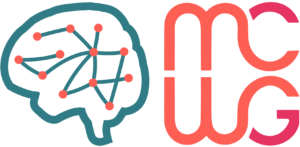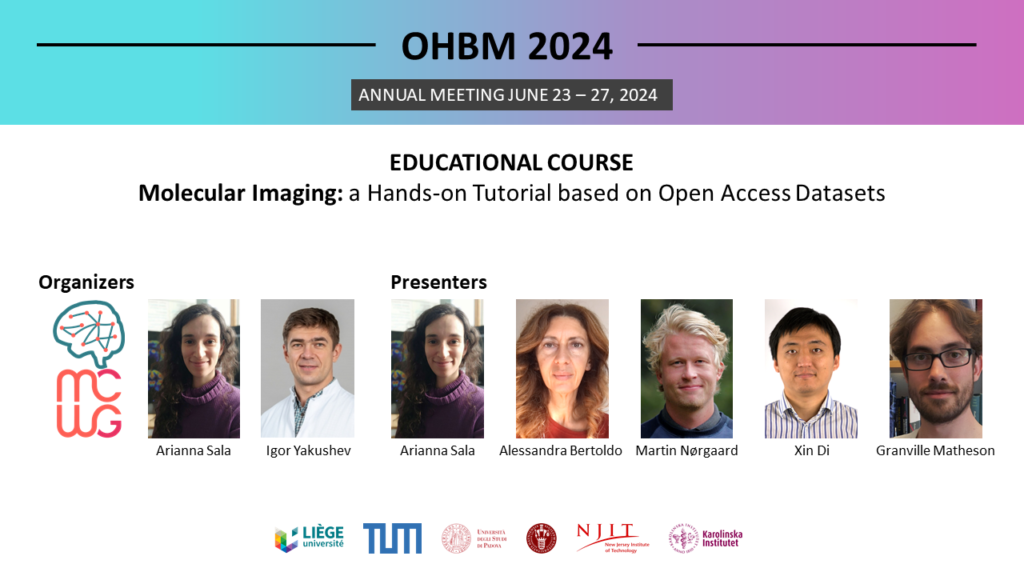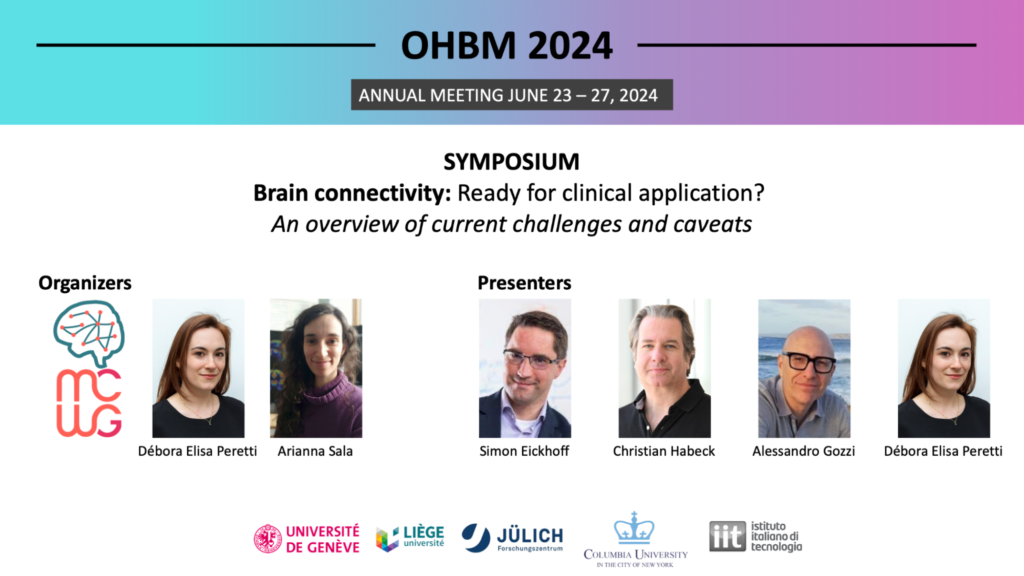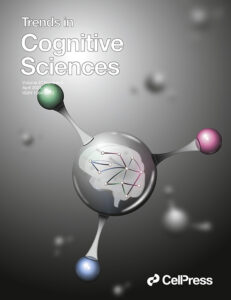
Hello!
Many thanks to all who participated in our Molecular Connectivity Symposium, “What is brain connectivity?” ! We wish to thank our generous sponsors, DFG, Bruker (PMOD), Curium and Technical University of Munich!

After the excellent talks and discussions at the Symposium, we have set a foundation for a forthcoming nomenclature consensus paper, stay tuned!
Also after the success of the symposium in Munich, we continue our discussions online with the Molecular Connectivity Online Series (MCOS)! Thanks to all who attended the May MCOS with Joana Pereira, PhD!
Please join us for our final MCOS of the season in June, featuring Tommaso Volpi, PhD! Please find details and registration information below!
We are also sharing details about MCWG-related events at the upcoming OHBM Meeting, with information about talks as well as posters from within and outside of MCWG in areas related to molecular questions and brain connectivity. We hope to see you at MCOS and at OHBM, in Seoul, Korea!
As a final note, the newsletter will be quiet for the next few months for a summer hiatus and will return in the fall! Please stay tuned for announcements as well as links to recordings from the Symposium coming in September!
We hope everyone has a safe and restful summer!
We are pleased to announce the next MCOS talk featuring Tommaso Volpi, PhD!
Date: June 14th, 2024
Time: 15:00 CET, 9:00 EST
Title: Molecular connectivity & dynamic PET: comparing time series and subject series approaches
Please join us for this 30 minute presentation to be followed by discussion (~25 minutes).
Please register here.
Dynamic PET acquisitions allow individuals to obtain individual estimates of molecular connectivity (MC) from time series data – similarly to fMRI functional connectivity. In this talk, focusing on [18F]FDG as a representative tracer, I will discuss
Much of this content is included in our 2023 JCBFM paper.

Dr. Tommaso Volpi is currently a Postdoctoral Associate at the Department of Radiology at Yale University, under the supervision of Prof. Richard Carson. He obtained his Ph.D. in 2023 from the University of Padova, Italy, with a thesis on the complex coupling between [18F]FDG PET measures of brain glucose metabolism and fMRI proxies of spontaneous activity, including the comparison of metabolic and functional connectivity. His main current projects concern methods for PET kinetic modeling and noninvasive input function estimation to obtain physiologically informative parameters, and the integration of PET- and MRI-derived features to understand brain function and connectivity in health and disease (Parkinson’s disease, epilepsy, gliomas). He is a member of the Validation Council of the MCWG.
You can find more about Tommaso here!
The MCOS promotes rigor in research and resource sharing. We aim to hold MCOS every third Friday of the month, but is subject to change due to speaker availability.
The next MCOS seminar will be held in September, 2024!
Please watch our social media and stay tuned for further details!
1. OHBM 2024 will feature an educational course organized by members of the MCWG:
Molecular Imaging: a Hands-on Tutorial based on Open Access Datasets
Date: June 23 2024
Time: 1:30 PM – 5:30 PM
Room: Grand Ballroom 105

Organized by Arianna Sala and Igor Yakushev, the educational course will feature presentations from Arianna Sala, Alessandra Bertoldo, Martin Nørgaard, Xin Di and Granville Matheson. This Educational Course aims to provide a basic introduction to molecular imaging, covering its basic principles and main tools, illustrating similarities and critical differences in the main molecular measures commonly encountered in open access/easily accessible molecular datasets. Different hands-on, interactive sessions will allow the attendees to get first-hand experience on data access, processing and modelling of different types of molecular imaging data. The target audience for this educational course are researchers in the field of neuroimaging of all levels of expertise, wishing to expand their knowledge.
Presentations:
For further information about the Educational course, please see here.
2. OHBM 2024 will also feature a symposium organized by members of the MCWG:
Brain connectivity: Ready for clinical applications?
An overview of current challenges and caveats
Date: June 24 2024
Time: 8:00 AM – 9:15 AM
Room: Grand Ballroom 103

Organized by Débora Peretti and Arianna Sala, the symposium is entitled “Brain connectivity: ready for clinical application? An overview of current challenges and caveats” and will feature presentations from Simon Eickhoff, Christian Habeck, Alessandro Gozzi, and Débora Peretti. In this symposium we discuss some of the most pressing methodological considerations that still need to be addressed by neuroscientists in order to obtain robust connectivity markers for inference and prediction. Both statistical and biological considerations will be covered, on the grounds that not only prediction of phenotypes from activation/connectivity data, but also understanding the mechanisms underlying inter-individual connectivity differences, are necessary to obtain robust, generalizable topographic substrates. Finally, an overview of the translation of connectivity metrics into clinical practice will be presented.
Presentations:
For further information about the Symposium, please see here.
3. MCWG Member Posters at OHBM
Débora Peretti, Cecilia Boccalini, Max Scheffler, Cristelle Rodriguez, Marie Montandon, Sven Haller, Panteleimon Giannakopoulos, Giovanni B. Frisoni, Valentina Garibotto
Title: Brain Connectivity Measured Through Spatial Covariance as a Biomarker for Neurodegeneration in AD
Poster number: 252
Date and time: June 24th, 01:15 – 03:15 PM, and June 25th 02:00 – 04:00 PM
Topic: Spatial covariance maps provide a strong and specific marker for AD, outperforming conventional metrics to assess neurodegeneration.
Amritha Harikumar, Maria Misiura, Daniel Amen, David Keator, Vince Calhoun
Title: SPECT brain networks and their functional connectivity in schizophrenia patients vs controls.
Poster number: 661
Date and time: June 24th, 2024: 01:15 PM – 03:15 PM and June 25th, 2024: 02:00 PM – 04:00 PM
Topic: Here we utilize SPECT data to compare group differences in patients with schizophrenia and healthy controls using fully automated, spatially constrained ICA (i.e., the Neuromark pipeline). We evaluate both the spatial regions as well as the whole brain SPECT connectome (assessed as covariation among subjects) to evaluate the neuroimaging links to schizophrenia
Giulia Vallini, Giorgia Baron, Giulia Pagnin, John J. Lee, Andrei G. Vlassenko, Manu S. Goyal, Diego Cecchin, Maurizio Corbetta, Alessandra Bertoldo
Title: Whole-brain metabolic-effective coupling in healthy controls and its disruption in gliomas.
Poster number: 2492
Date and time: June 26th, 2024: 12:45 PM – 14:45 PM and June 27th, 2024: 12:45 PM – 14:45 PM
Topic: In our study, a dual metabolic-functional association emerges: one at the local level (glucose uptake-nodal signal directionality) and one at the network level (metabolic connectivity-partial covariance). Furthermore, our study reveals how these two distinct decouplings can differentiate glioma patients based on lesion location – with local disruptions observed only for temporo-parietal lesions and network alterations for frontal lesions – providing new insights into the pathophysiology and metabolic-kinetic linkage of glioma
4. Molecular Connectivity Related Posters at OHBM
Penghui Du, Sean Coursey, Ting Xu, Hsiao-Ying Wey, Jonathan Polimeni, Quanying Liu, Jingyuan Chen
Title: Human Cerebral Cortex Organization Estimated by Functional PET-FDG “Metabolic Connectivity”
Poster number: 1496
Date and time: June 26, 2024: 01:45 PM – 03:45 PM and June 27, 2024: 01:45 PM – 03:45 PM
Topic: In this study, we applied a connectivity gradient-based analytical scheme on a resting-state simultaneous fPET-fMRI dataset, aiming to characterize the detailed cortical organization of fPET-derived MC and understand how it differs from the fMRI-derived functional network structures.
Fernando Bravo, Sabrina Haas, Tudor Ionescu, Irene Gonzalez-Menendez, Leticia Quintanilla-Martinez, Gina Dunkel, Laura Kuebler, Bettina Weigelin, Gerald Reischl, Bernd Pichler, Kristina Herfert
Title: Simultaneous fPET/fMRI unveils nigrostriatal pathway mechanisms during optogenetic stimulation.
Poster number: 2397
Date and time: June 26, 2024: 01:45 PM – 03:45 PM and June 27, 2024: 01:45 PM – 03:45 PM
Topic: In this study, the use of simultaneous [18F]FDG-fPET/BOLD-fMRI allowed us to demonstrate excitation-inhibition mechanisms of the nigrostriatal pathway during optogenetic stimulation, which are concealed in isolated fMRI readouts.
We invite you to please send information about events related to brain and molecular connectivity or news or job opportunities that you wish to share with the community for consideration by the final day of each month using this form.
The Functional Neuroimaging Laboratory has a postdoctoral position (up to 6 years, internationally competitive salary) aimed at understanding the biological basis of brain connectivity by implementing multimodal optical imaging and functional neuroimaging in the mouse – maybe of interest for member PhD students: https://www.fens.org/careers/job-market/job/118960
This position is part of a newly funded research program that is launching to understand how brain-wide networks respond to internal and external modulation. The lab (www.fnimg.iit.it) is a supportive and collaborative environment, and this project is part of a larger program with opportunities for future collaboration and growth. The lab expects to have multiple new openings soon (including 1 data analyst, 3 postdocs and 1 PhD student) in the coming weeks, so please stay tuned.
The MCWG Outreach Council invites you to submit information about papers, conferences, presentations or other events or news related to brain and molecular connectivity or job opportunities that you wish to share with the community for consideration by the final day of each month using this form.

The MCWG is made up of four international and multidisciplinary councils dedicated to promoting molecular connectivity research via dissemination of methods, results, collaboration, and resource sharing (e.g. datasets, tools) within the scientific community. We encourage the neuroscientific community to take an integrative perspective in study of the brain connectome, where various methods including MRI-based techniques, electrophysiological tools, and molecular imaging advance our understanding of the brain. Please find fundamental questions outlined here: “Brain connectomics: time for a molecular imaging perspective?”
Our website can be found here. We also invite you to join the MCWG!